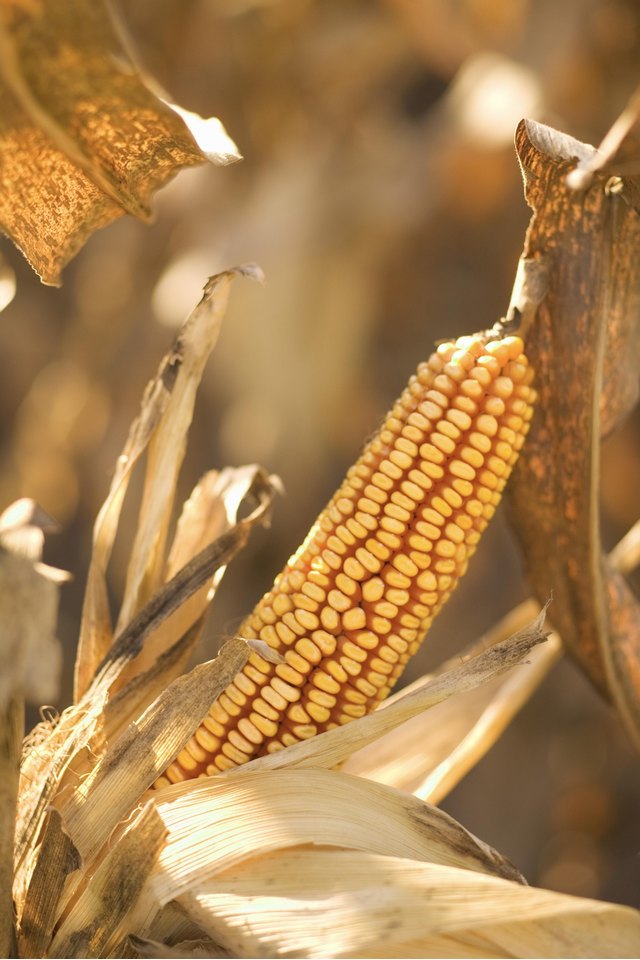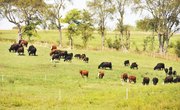
Not only is corn an important crop from the standpoint of human consumption, but it is extensively used to feed animals as well. One particular use of this grain that generates a great deal of controversy is growing it primarily to attract and feed deer. It is used by individuals who are concerned about the potential threat of starvation in deer populations during the winter months and by hunters who bait deer.
Features
Deer corn is available in bags of stripped kernels or as whole ears that are left to dry on the stalks still standing in the fields. Other landowners dedicate a certain portion of farmland to growing corn which is left standing throughout the year, providing a food source for the deer into the winter months as well as luring them during hunting season. Corn stalks generally grow tall enough so their tops are accessible above the snow, making them easy for the deer to get at.
Other Uses
Deer corn is also sold as a component of seed and grain blends used to feed deer during the fall, winter and early spring before nature renews their natural food supplies. It is also an ingredient in grain blocks, which are compressed blends of seeds, grains and fillers combined with binders and baked. These grain blocks provide a longer-lasting source of food for the deer. They extend the time between feedings, and contain other important nutrients supplied by other ingredients that the deer need.
Benefits
While deer corn is low in protein, it is an excellent source of carbohydrates and fats that boost their energy reserves for the fall and into winter. Grown as deer forage, the corn stalks also provide cover and shelter for the deer. Larger plots are more beneficial, as they assure an adequate supply for the deer despite the fact that the grain is also consumed by other wild animals such as bears, raccoons and crows. For large deer populations, plots of at least 5 acres are recommended.
Cultivation
Cow corn and field corn are the best types to grow for use as deer corn. It is sometimes planted with other crops such as soybeans, which provides an additional food source for deer and minimizes the growth of weeds. Corn is a demanding crop that is best grown on well drained, highly enriched soils, and it does not tolerate drought, making supplemental watering during dry spells necessary.
Considerations
There's a marked difference of opinion as to the wisdom of feeding deer as well as luring them during the hunt. Although most people who feed deer mean well, some state wildlife agencies, such as Maine's, discourage the practice, citing many reasons why it's more harmful than beneficial. Other states actively prohibit hunters from baiting deer for ethical reasons, citing that the practice gives the hunter a clear advantage over the deer.
References
- Farm & Dairy; Feeding Deer Corn Is Not the Best Thing To Do; Scott Shalaway; February 5, 2010
- Whitetail Stewards; Corn For Deer Food Plots; Matt Tarr; 2006
- Michigan Department of Natural Resources; Grain Plot Planting; Sargent, M.S and Carter, K.S., 1999
- Bass Pro Shops; Deer Nutrition For a Healthier Herd; 2011
Writer Bio
Rachel Lovejoy has been writing professionally since 1990 and currently writes a weekly column entitled "From the Urban Wilderness" for the Journal Tribune in Biddeford, Maine, as well as short novellas for Amazon Kindle. Lovejoy graduated from the University of Southern Maine in 1996 with a Bachelor of Arts in English.



